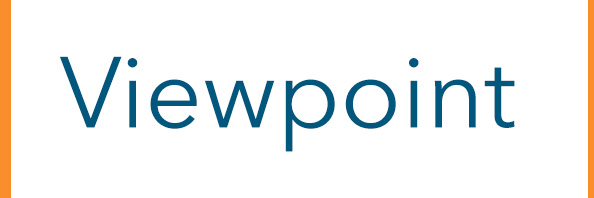“The big, well-funded, elite research institution is a particularly American phenomenon and represents one of the country’s greatest contributions to the world of knowledge. But…I wonder if America’s success at providing for the top of the pyramid, at creating places for future geniuses to be taught by current geniuses, sometimes blinds us to a more important question: How good a job do we do at educating the middle, or the group below the middle? There are a lot more people at the middle and just below the middle than there are at the top, and you can make a very good case that the future success of the American project depends more on how those people are treated and how their talent is developed than it does on how warm and comfortable and inviting we make the world for the favored few.”
— Malcolm Gladwell
I Hate the Ivy League: Riffs and Rants on Elite Education
In a widely anticipated decision, the U.S. Supreme Court on June 30 struck down the use of affirmative action in college admissions, declaring that policies in place at Harvard and the University of North Carolina violated the equal protection clause of the 14th Amendment.

Writing for the majority, Chief Justice John Roberts noted, “The court has permitted race-based college admissions only within the confines of narrow restrictions: Such admissions programs must comply with strict scrutiny, may never use race as a stereotype or negative, and must — at some point — end.”
The question at the heart of the decision is whether now was the right time for those programs, which have been allowed by nearly 50 years of court precedent, to end. Public opinion leans in the court’s direction: According to recent polling, half of Americans, including a third of Black and 40% of Hispanic respondents, agree that colleges should not consider race in admissions decisions. Only a third think they should.
Without a doubt though, as President Joe Biden said moments after the ruling was issued, “Discrimination still exists in America,” and this decision does not change that. Moving forward, selective colleges that have relied on race as a factor when deciding who to admit can no longer do so and will have to use other methods of achieving diverse classes of students.
But perhaps spending so much time and attention on which students are admitted to some of the most elite and exclusionary institutions in the world should no longer be our focus anyway. If we as a nation want to truly take affirmative action toward addressing past wrongs rooted in racism and eliminating racial gaps in socioeconomic success, then perhaps this Supreme Court decision can serve as a wake-up call that it’s time to end our national obsession with the Ivy League and direct our attention and resources to where they will make a much bigger and transformative difference: America’s community colleges and open-access public and private universities.
A brief history lesson
While the 1964 Civil Rights Act outlawed racial discrimination, it did not address and compensate for generations of wrongdoing inflicted upon African Americans. In a 1965 commencement address at historically Black Howard University, President Lyndon Johnson declared:
You do not wipe away the scars of centuries by saying: ‘Now, you are free to go where you want, do as you desire, and choose the leaders you please.’ You do not take a man who for years has been hobbled by chains, liberate him, bring him to the starting line of a race, saying, ‘You are free to compete with all the others,’ and still justly believe you have been completely fair…This is the next and more profound stage of the battle for civil rights. We seek not just freedom but opportunity, not just legal equity but human ability, not just equality as a right and a theory, but equality as a fact and as a result.
The following year, 1966, Johnson required government contractors to “take affirmative action to ensure that applicants are employed, and that employees are treated during employment, without regard to their race, color, religion, sex, or national origin.” President Richard Nixon followed suit in 1969 with an executive order stating, “It is the policy of the Government of the United States to…promote the full realization of equal employment opportunity through a continuing affirmative program in each executive department and agency.”
By the end of the decade, selective colleges had begun adopting similar “affirmative action” policies to fight racial discrimination. In 1969, for example, Columbia University’s freshman class included 100 Black students, twice as many as the year before. In the years since, affirmative action on college campuses, particularly as it has related to admissions policies, has been constantly litigated, and occasionally limited or significantly changed.
One of the most important cases, Regents of the University of California v. Bakke in 1978, established the version of affirmative action that has guided most selective institutions’ admissions practices for nearly half a century: Allan Bakke applied to the medical school at the University of California and was rejected, twice. He sued, claiming that the university’s practice of reserving 16 seats in a class of 100 for minority students discriminated against him as a White man.
The court’s eventual ruling struck down the use of “quotas” (like reserving 16 seats specifically for minority students) but upheld the idea that using “affirmative action” to create a racially diverse educational environment (not just Black and White students, but Hispanic, Native American and other underrepresented populations) was justifiable, provided that race was only one among several factors used to determine admissions.
There have been cases since, such as Hopwood v. Texas in 1996 that have threatened to more significantly curtail affirmative action college campuses; and others, like Grutter v. Bollinger in 2003, that have reinforced the principles of the Bakke decision. Significantly, Supreme Court Justice Sandra Day O’Connor ended her majority opinion of the Grutter v. Bollinger case by saying, “The Court expects that 25 years from now, the use of racial preferences will no longer be necessary to further the interest approved today.”
And so we find ourselves, 20 years later, with a court that has indeed determined that racial preferences are no longer necessary (or, at least, no longer legal).
Limits of affirmative action
While we do not know for certain how this decision will affect enrollment of underrepresented students on the campuses of selective universities across America, a lesson from California, which banned affirmative action in 1996, may point the way: Applications from Black and Hispanic high school graduates fell and admissions by underrepresented populations dropped by 50% or more at the state’s most selective campuses.
Eight other states also already ban affirmative action in college admissions, including Arizona, Florida, Idaho, Michigan, Nebraska, New Hampshire, Oklahoma and Washington. Even before the Supreme Court’s June 30 ruling, nearly a third of all Americans lived in a state where considering race in college admissions was illegal.
Even where it is legal, it has impacted, relatively speaking, a small number of people.
According to a 2019 Pew Research Center study, most U.S. colleges are not considered “selective”: they accept more than two-thirds of their applicants. In fact, of the nearly 1,400 colleges studied, only 17 admitted fewer than 10% of applicants, while another 29 admitted between 10% to 20%. Collectively, highly selective colleges across the country account for a mere 4%, or 720,000, of the approximately 18 million undergraduates enrolled nationwide.
Recent figures from the College Board reflect a modest increase in the percentage of Black, Hispanic and other underrepresented students at these selective schools between 2020-21: from 26% to 29%, or around 200,000. That is a lot of students but still only represents 3% of the 5,869,739 Black, Hispanic and other underrepresented students enrolled at American colleges in fall 2022, according to the National Student Clearinghouse Research Center.
As Bertrand Cooper, writing for the Atlantic recently, so incisively argues in “The failure of affirmative action,” race-based admissions policies have effectively done nothing at all, in nearly 50 years, to raise the prospects of impoverished Black Americans.
The overwhelming majority of Black students admitted to Harvard and other highly selective institutions are drawn from the wealthiest 20% of Black families, more than half of whom are not “generational African Americans” (descendants of slavery), but rather, West Indian or African immigrants or their children. So, perhaps 50,000 of the Black, Hispanic and other underrepresented students at selective schools, less than 1% of the total enrolled nationwide, are in need of the potential socioeconomic boost intended by affirmative action.
As Cooper wryly notes, “For the Black poor, a world without affirmative action is just the world as it is — no different than before.”
What’s next?
This does not mean we should ignore the great disparities that exist in enrollment of underrepresented students at selective institutions of higher education. There are still steps that colleges, states and federal agencies can and should take to ensure the greatest possible access to selective universities for Black, Hispanic and other underrepresented student populations, such as:
Eliminate preferences. Get rid of all preferences in the application process, including legacy admissions for the children of alumni, special treatment for the families of donors and seats reserved for the children of employees. These preferences overwhelmingly advantage affluent, White applicants.
Consider applicant essays. Justice Roberts’ decision noted that, “Nothing in this opinion should be construed as prohibiting universities from considering an applicant’s discussion of how race affected his or her life, be it through discrimination, inspiration, or otherwise,” which leaves the door open for selective institutions to provide weight to applicant essays in the admissions process.
Increase need-based financial aid. Duke University has already announced a plan to waive tuition for all residents of North and South Carolina with family incomes under $150,000, a move that might be considered a form of “affordable action,” that the university hopes will improve the odds of underrepresented students attending the university.
Try a “percentage plan.” Admissions programs like Texas’ “Top 10% Plan” that guarantee admission to a state’s flagship universities for a percentage of every high school’s graduating class are meant to be a fair way of ensuring a greater diversity of students are admitted, though they have shown a mixed record of success.
Expand access for community college transfers. Nationwide, over half of community college students are students of color. Expanding the number of seats available at selective institutions for transferring-in community college students should ensure greater diversity in admissions.
Policy changes
Still, all of these steps would apply to less than 1% of the total number of Black, Hispanic and other underrepresented undergraduate students at selective universities who are in need of the socioeconomic boost intended by affirmative action practices. So, how do we best serve the 99% of students we should be paying the greatest attention to? It’s going to take time and a lot more resources, but here are some key places to start:
Double the Pell Grant. Back in the 1970s, the Pell Grant covered 75% of the cost (tuition, books, room and board) of attending a public university. Today, the same grant covers less than 30%, putting the cost of a college degree out of reach for many low-income students, a disproportionate number of whom are Black or Hispanic. Consequently, they don’t go to any college. Doubling the Pell Grant would send more underrepresented students to college, and to a greater array of public and private institutions.
Reallocate state funding: As University Business reported last month, even while Black and Hispanic populations have increased significantly over the past decade in the nine states where affirmative action in college admissions was already illegal, enrollment at flagship universities in those states has essentially remained flat.
Those states have another option: Reallocate funding from those flagship universities to the community colleges and open access state universities that actually educate a much larger number of their state’s students, including Black, Hispanic and other underrepresented populations. Here in Massachusetts, for example, the state’s 15 community colleges enroll 42% of the undergraduates and, significantly, 57% of the commonwealth’s Black, Hispanic and Native American students, yet receive only about 25% of state funding for higher education.
Similar funding allocations exist across the country, so investment in the institutions that serve the greatest number of students with the greatest needs looks something like this:
Compensate competitively. The less selective a college or university is, the less it probably pays its faculty and staff, making it difficult, especially in the current economic and labor market, to attract and retain top talent. As an example, here in Massachusetts, salaries at community colleges for full-time faculty with graduate degrees start around $50,000 — entirely insufficient, especially with the high cost of living in our region and recent inflation — to compete with colleges in other states or K-12 schools and universities here in our own.
Open access colleges and universities, both public and private, should be doing all they can to secure additional resources and pay competitive wages and benefits.
Maximize transfer opportunities. When students transfer from one college to another, they often lose credits along the way, a process that is particularly damaging to Black, Hispanic and other underrepresented students who start at community colleges in greater numbers. Colleges and universities, along with public policymakers, should be doing everything possible to maximize transfer opportunities, simplify processes and ensure credits are recognized toward higher degrees.
Affirmative action in college admissions, as we have known it, for a relatively small number of students at exclusionary institutions may be dead. Long live affirmative action, as a mindset, as a system, as a way of resourcing institutions, to serve the vast majority of underrepresented, underprivileged students who need it now more than ever.





